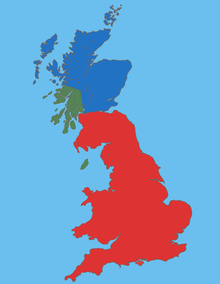People
Saints
- Ireland
- Mainchín of Limerick (fl. late 6th century), son of Sétna, patron saint of Limerick. Feast day: 29 December.
- Manchán of Lemanaghan (d. 665), son of Sillán, patron of Liath Mancháin, now Lemanaghan, in County Offaly. Feast day: 20 or 24 January.
- Manchán of Min Droichit (d. 652), also Manchéne, scholar and abbot of Min Droichit (Co. Offaly). Feast day: 2 January.
- Mainchín of Corann, son of Collán. Feast day: 13 January.
- Manchán of Mohill, (d. 538), linked to Mohill, co. Leitrim and his Shrine. Feast day: 14 February
- Manchán of Athleague, (fl. 500), patron saint of Athleague, county Roscommon. Invoked against disease.
Mainchín mac Colláin was an Irish saint in Corran who is supposed to have flourished in the late 5th or 6th century.

Manchanof Mohill,, was an early Christian saint credited with founding many early Christian churches in Ireland. His life is obscured because many people named Manchan are found among the monastically-inclined Medieval Irish Christians, and the name is a diminutive of Irish: Manach Latin: Monachus, a monk. Manchan probably died of famine during volcanic winters caused by the extreme weather events of 535–536, which preceded the 6th century Justinian plague of Mohill. The Shrine of Manchan is a remarkable and unique example of Irish Urnes style art, adapted to Ringerike style, skillful in design and execution. Saint Manchan's feast day is celebrated 14 February by Roman Catholics, and Anglicans.

Mohill is a town in County Leitrim, Ireland. The town of Carrick-on-Shannon is approximately 16 km (10 miles) away.
- Scotland
- St Machan, 12th century Scottish Saint.
- Wales
- Mawgan, Meugan, Meigant, (fl. 5th or 6th century), refers to one or two Brythonic saints of Cornwall/Brittany (Mawgan) and Wales (Meugan).
- Mannacus, 6th century, Caer Gybi (fort) in Wales.
Mawgan and Meugan are names referring to either one or two Brythonic saints who flourished in the 5th or 6th century.

The Britons, also known as Celtic Britons or Ancient Britons, were Celtic people who inhabited Great Britain from the British Iron Age into the Middle Ages, at which point their culture and language diverged into the modern Welsh, Cornish and Bretons. They spoke the Common Brittonic language, the ancestor to the modern Brittonic languages.

Cornwall is a county in South West England in the United Kingdom. The county is bordered to the north and west by the Celtic Sea, to the south by the English Channel, and to the east by the county of Devon, over the River Tamar which forms most of the border between them. Cornwall forms the westernmost part of the South West Peninsula of the island of Great Britain. The furthest southwestern point of Great Britain is Land's End; the southernmost point is Lizard Point. Cornwall has a population of 563,600 and covers an area of 3,563 km2 (1,376 sq mi). The county has been administered since 2009 by the unitary authority, Cornwall Council. The ceremonial county of Cornwall also includes the Isles of Scilly, which are administered separately. The administrative centre of Cornwall, and its only city, is Truro.
Mainchín mac Setnai, also anglicised to Munchin, was allegedly the founder of the church of Luimneach, Ireland, and a saint in Irish tradition, acquiring special eminence as patron of Limerick City. Both his origins and the date of his association with the city are debated.
Saint Manchán mac Silláin, Manchianus in Latin sources, is the name of an early Irish saint, patron of Liath Mancháin, now Lemanaghan, in County Offaly. He is not to be confused with the scholar Manchán or Manchéne, abbot of Min Droichit . There are variant traditions concerning the saint's pedigree, possibly owing to confusion with one of several churchmen named Manchán or Mainchín. The most reliable genealogy makes him a son of Sillán son of Conall, who is said be a descendant of Rudraige Mór of Ulster, and names his mother Mella.
Manchán of Min Droichit was an Irish scholar and Abbot.
First name
- Manchán Magan, Irish poem writer
| This page or section lists people that share the same given name. If an internal link led you here, you may wish to change that link to point directly to the intended article. |



